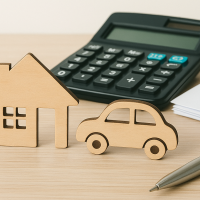Filing taxes might not be the most exciting task, but getting organized ahead of time can make the process much smoother. Whether you’re a W-2 employee, a freelancer, or a business owner, knowing exactly what documents you need will help you maximize deductions, avoid errors, and get your taxes filed on time. Let’s break it down step by step.
Step 1: Gather Your Basic Information
Before diving into income-specific documents, start with the basics:
Personal Information
- Social Security numbers (SSN) or Individual Taxpayer Identification Numbers (ITIN) for yourself, your spouse, and dependents
- Last year’s tax return for reference
Banking Information
- Your bank’s routing and account numbers for direct deposit of your refund
Step 2: Collect Income Documents, and Alternatives
Depending on how you earn money, you’ll need different forms to report your income accurately.
For W-2 Employees
- W-2 Form: Issued by your employer, this form details your earnings and the taxes withheld throughout the year
For Freelancers & Gig Workers
- 1099-NEC Forms: If you earned more than $600 from a client, they should send you this form
- 1099-K Forms: If you received payments through third-party processors (PayPal, Venmo, etc.), this form will report your earnings
- Invoices & Payment Records: Even if you don’t receive a 1099, you still need to report all income earned
- Expense Records: Track business-related expenses like office supplies, software, travel, and marketing costs to deduct from your taxable income
For Business Owners
- 1099 Forms: If your business provided services to other businesses, you may receive 1099s from clients
- Profit & Loss Statement: A summary of your income and expenses for the year
- Business Expense Records: Receipts for office supplies, advertising, travel, utilities, rent, and other deductible costs
- Payroll Records: if you have employees, gather W-2 and 1099 forms issued to them
- Estimated Tax Payments: If you made quarterly tax payments, collect your payment records
Step 3: Organize Your Deductions & Credits
Maximize your tax savings by tracking eligible deductions and credits
Common Deductions
- Student Loan Interest (Form 1098-E)
- Mortgage Interest (Form 1098)
- Medical Expenses (if they exceed a percentage if your income)
- Charitable Contributions
- Education Expenses (Form 1098-T)
- Retirement Contributions (IRA, 401(k), SEP contributions for self-employed individuals)
- State & Local Taxes Paid
Potential Tax Credits
- Child Tax Credit
- Earned Income Tax Credit (EITC)
- Education Credits (Lifetime Learning Credit, American Opportunity Credit)Energy Efficiency Credits (for home improvements like solar panels)
Step 4: Double-Check for Life Changes
Did anything big happen this year? These events impact your tax return:
- Marriage or divorce
- Having a child
- Buying or selling a home
- Moving to a new state
- Changing jobs or starting a business
Step 5: Decide How You’ll File
Once everything is organized, it’s time to decide whether to:
File on Your Own – If your return is straightforward, tax software can help.
Use a Tax Professional – If you have a complicated tax situation (self-employment, multiple income sources, major life changes), a CPA or tax preparer can ensure accuracy and find deductions you may have missed.
Step 6: File On Time & Avoid Penalties
Tax Deadline: The usual deadline for filing federal taxes is April 15, unless it falls on a weekend or holiday
Extensions: If you need more time, file for an extension (Form 4868), but remember – this only gives you more time to file, not to pay any taxes owed.
Final Thoughts
Preparing for tax season doesn’t have to be stressful. By staying organized, gathering the right documents early, and knowing what deductions you qualify for, you can make filing your taxes a breeze. Whether you’re a W-2 employee, a freelancer, or a business







